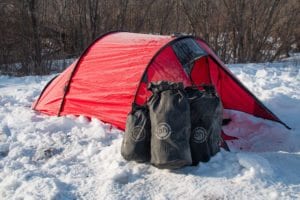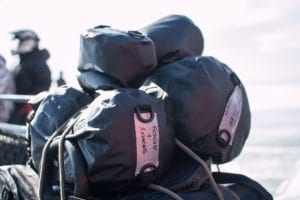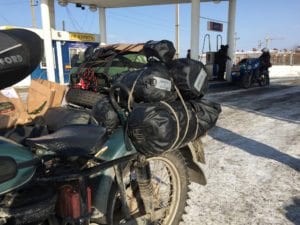The Ice Run Challenge
You, a rubbish antique Russian motorcycle and the deepest lake in the world.
This is the Ice Run challenge – described […]
You, a rubbish antique Russian motorcycle and the deepest lake in the world.
This is the Ice Run challenge – described as the adventure that separates the men from the boys; it’s an invasively cold race in the biblical remoteness of Siberia in a notoriously temperamental vehicle. The Ice Run brings together 12 teams, old school Ural sidecar motorbikes, 1500km of frozen ice roads and temperatures that average a staggering -20°F.
The Ice Run is organised by The Adventurists who aim to find ways to make the world a bit more difficult. They believe that there’s no greater moment than those seconds when you leap into an abyss of uncertainty and disaster. Every adventure they run raises more money for various charities and so far they have raised a mind-bending £5 million pounds and counting.
There is no set route on the Ice Run, only GPS coordinates of fuel drops and hazardous areas for you to avoid. Parts of the ice will be sculpted by the wind and others will be cracked and raised and the route up the lake will not be a straight line – that much is safe to assume.
We were approached by James Hubbard, a paramedic with the South Western Ambulance Service who was raising money for a local charity to see if we could offer our support. We sent James a set of our V100 Dry Bags to trial and put through their paces while keeping all of his equipment dry and secure.
“Temperatures fell as low as -25c, even colder with wind chill. Thinner items and even my large duffle bag became brittle at these temperatures, Marc’s new tent developed holes where the brittle material broke. The Openhouse bags felt stiffer when very cold but didn’t become brittle at all, they are certainly built to last!”
“Having a number of separate bags enabled us to separate out our kit. This made a huge difference in efficiency and ease. When we stopped for lunch, one bag came off with our food, water, kettle, stove and fuel and we were well on the way to boiling water whilst others were still rummaging through their massive bags looking for their stove. The smaller bags were also useful for more ‘personal’ items that might be needed in a hurry.
“This photo shows how we were able to maximise the available space; because of the awkward shape of the bike with the high rear saddle and the difficulty of doing anything with thick gloves on we opted to use bungees to keep the bags in one place, they were backed up by the supplied webbing straps keeping everything tightly tied down.”







